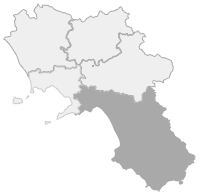The ancients venerated it as a water divinity and represented it with a prolific white beard and, in their hands, a vase where precious water was flowing.
At that time, Sarno River, as well as being clear and rich in fish, it was also quite different from the actual river. Nature first considerably changed its flow (nowadays of 24 kilometres), with the eruption of Vesuvius in 79 A.C., which devastated the valley.Then, during the following centuries, on several occasions and in different locations, men have been the consequence of that change. All because of the low altitude of the five springs in the Districts of Sarno and Nocera Inferiore from which it originates in the mountain range of Sant’Angelo-Pizzo d’Alvano, in the chain of Picentini Mounts, rich in torrents feeding the South’s biggest basin of potable water. The low slope has always caused problems and slowdowns to the water runoff, as well as an accumulation of debris on the riverbed, due to flooding over the centuries. In order to avoid them, water drainage systems have been created on both the higher and the lower Sarno. However, they have not always produced the expected effects: they actually have worsened the initial situation. After having gathered the contributions of the tributaries and having crossed Scafati, it flows into the Gulf of Naples, in front of the Cliff of Rovigliano, after having reached the end of its journey




Comments powered by CComment